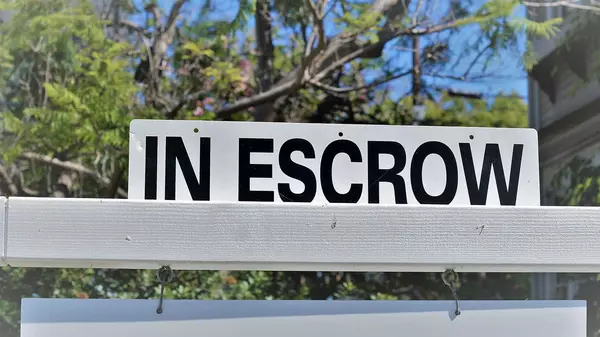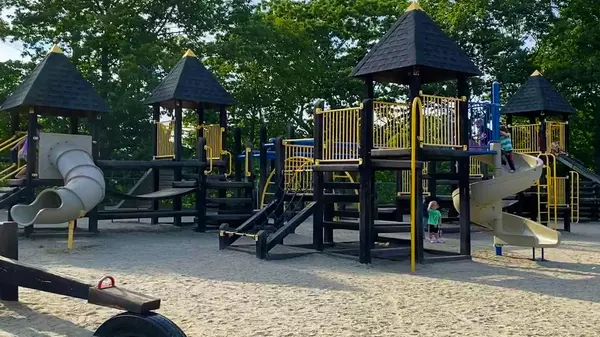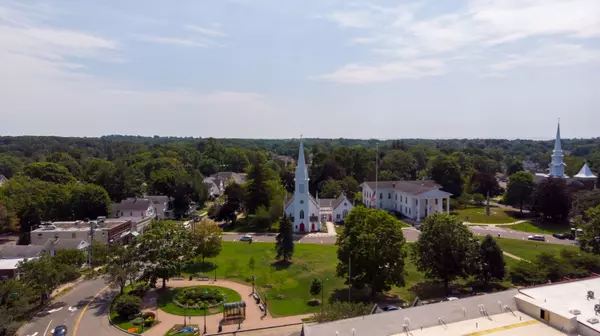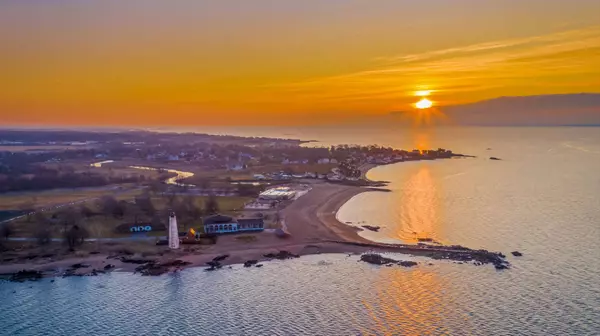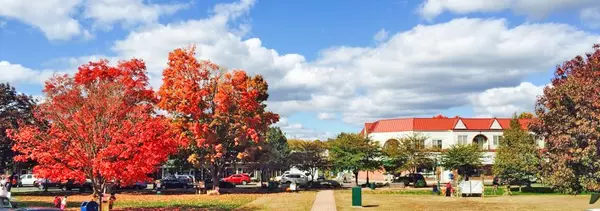Featured Town: Branford
by Daniel Lussier
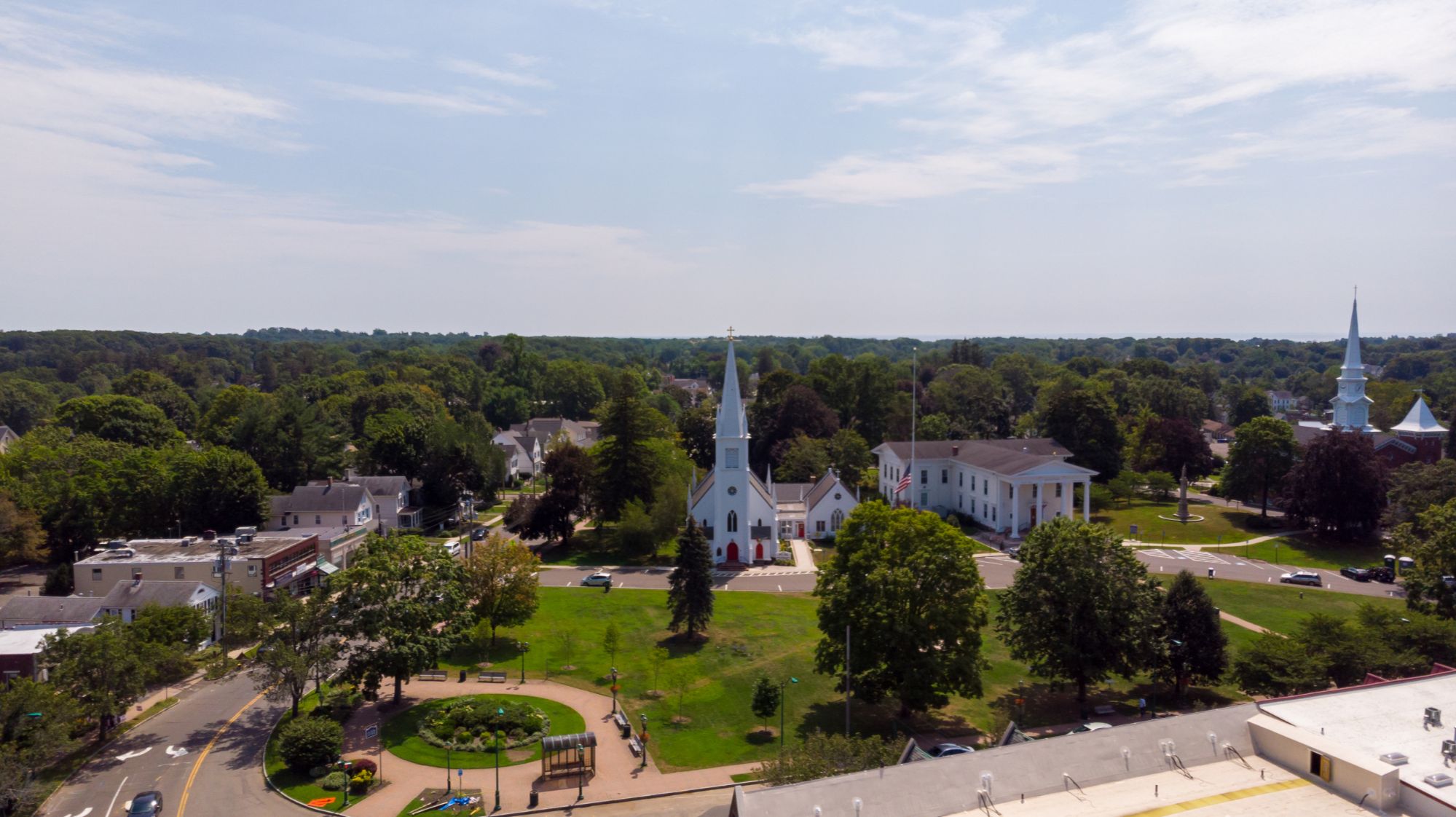
Quick Facts about Branford
LOCATION
New Haven County, East of Quinnipiac River, about 6 miles east of downtown New Haven
AREA & GEOGRAPHY
28 sq mi. The Branford shoreline borders Long Island Sound and features several town and private beach areas. Over 20% of Branford is water, including the Branford River, Queach Brook and the Branford Supply Ponds. Branford also includes the Thimble Islands.
POPULATION
Appx. 27.9K (as of 2020 census)
COMMUTER INFORMATION (average car trip times)
Hartford: 50min
NYC: 1hr 40min
Boston: 2hrs 25min
Historic Communities
Branford’s community includes six historic districts that are listed on the US National Register of Historic Places and feature buildings in the Federal, Arts and Crafts, and Queen Anne style architecture.
BRANFORD CENTER
Branford Center is home to many small stores, restaurants, and coffee houses, which line Main Street, with the Green at the center. The Branford Green has churches as well as the town hall and other government facilities and hosts concerts and other events, such as the annual Branford Festival. Traditionally, the graduating class from Branford High School graduates in front of the Town Hall, weather permitting.
BRANFORD POINT HISTORIC DISTRICT
The Branford Point district was listed on the National Register of Historic Places in 1988. It includes a significant portion of the Branford Point neighborhood, generally considered to be the area along the west side of the Branford Harbor to the Amtrak railroad tracks.
This area is historically notable for housing Branford’s highest concentration of late 19th and early 20th century residential architecture. Up to the mid-19th century, this area was mainly farmland and difficult to reach from Branford Center. Harbor Street, with its bridge over Mill Brook, and Maple Avenue were both laid out in 1819, providing improved access. Beginning in the mid-19th century George Parker developed the area around Branford Point as a day resort, with a beach and wharf. His heirs eventually donated the property to the town to form Parker Memorial Park. The northern portion of the district developed as a residential area for workers at the nearby iron foundry (located just north of the district). The result of this development pattern was an assemblage of residences including late 18th-century farmhouses, Greek Revival houses of the mid-19th century, late 19th-century Victorians, and Colonial Revival houses of the early 20th century.
CANOE BROOK HISTORIC DISTRICT
small but ethnically diverse residential area west of the center of Branford, Connecticut, which exhibits more than 200 years of architectural history. It extends from Cherry Hill Road in the north to Bradley Street in the south, including portions of Main Street, Home Place, and North Harbor Street. It was listed on the National Register of Historic Places in 2002. The district takes its name from Canoe Brook, a waterway now largely built over by North Main Street and other construction.
The district is about 52 acres in size, with 51 historic residences. There are a few commercial and civic structures in the district, including two schools and a fire station, as well as a modest number of non-historic buildings. Most of the residences are wood frame structures, and are in a diversity of styles, from the early colonial Harrison houses to early 20th century Tudor Revival houses on Cherry Hill Road.
ROUTE 146 HISTORIC DISTRICT
The Route 146 district encompasses a historic streetscape in Branford and Guilford, Connecticut. Extending along Connecticut Route 146 between Flat Rock Road in Branford and the West River bridge in Guilford, it includes two centuries of rural residential architecture, and a well-preserved pre-World War II street layout created as a “state assistance road” in the 1920s. The district was listed on the National Register of Historic Places in 1990.
The district is about 169 acres (68 ha) in size, and includes the entire road right-of-way for Route 146 between the West River in Guilford and Flat Rock Road in Branford. It abuts the Guilford Historic Town Center to the east and the Stony Creek–Thimble Islands Historic District to the west. The built architecture of the district is entirely residential, representing a cross-section of rural styles covering 200 years from the early 18th to early 20th centuries.
STONY CREEK & THIMBLE ISLANDS HISTORIC DISTRICT
is a historic district encompassing a 19th-century summer resort area in Branford, Connecticut. Located in the southeastern part of the town, it encompasses the mainland Stony Creek neighborhood, and all of the major Thimble Islands which lie offshore from Stony Creek in Long Island Sound. The district includes a well-preserved array of domestic summer resort architecture spanning more than a century preceding World War II, as well as worker housing and other artifacts related to the area’s brief importance as a granite quarry. The district was listed on the National Register of Historic Places in 1988.
Stony Creek is a shore front neighborhood in the southeastern section of Branford, centered on a harbor on Long Island Sound. An eclectic community, Stony Creek has the ambiance of a small seaside village with a blend of various architectural style buildings and a few small retail establishments, sandwich shops, galleries and shop.
Just offshore from Stony Creek is an intriguing archipelago of islands known as the Thimble Islands. The Thimbles are a jumble of glacial rocks, ranging from 17 acres (6.9 ha) down to stepping-stone size, at the mouth of the harbor. Despite their small size, they possess a wealth of history and local lore, as well as providing pleasant scenery for a summer cruise.
The 1,400-acre (5.7 km2) area of the district includes much of the Stony Creek mainland area of Branford, along Thimble Islands Rd. between Rt. 146 and Long Island Sound, and includes all of the major Thimble Islands. Only a few buildings predate the resort period, including examples of Georgian and Federal architecture. There is one notable example of Greek Revival architecture from the 1840s: it is a cottage on Money Island. Italianate houses from the 1850s tend to be modest in scale and style, and are mainly located in the Stony Creek village area, which served the local granite quarries. Later Victorian-style houses are located throughout the area, which is known for its particularly large and well-preserved collection of Stick style houses. Probably the most elaborate of these is the William J. Clark House at 32 Prospect Hill, which is separately listed on the National Register. It was designed by the New Haven architect Henry Austin.
BRANFORD HILLS
Branford Hills sits on the western end of town and centers on the heavily commercialized strip of U.S. Route 1. Fast-food and sit-down restaurants, auto dealers, grocery stores, and several strip malls are located there. The more southern section features less dense areas with woodlands and farm featuring trails that the Branford Land Trust preserves that connect the Shoreline Greenway trail from New Haven to Madison. The northern section also features a less dense area with woodlands that surround Lake Saltonstall which also feature trail systems maintained by the Regional Water Authority, as the Lake is a reservoir for Branford.
Branford Hills features many condominium and apartment complexes.
INDIAN NECK
Indian Neck is in the south-central section of Branford, dominated by a peninsula bordering Branford Harbor. Both Foote Park and John B. Sliney Memorial Park are located within Indian Neck.
PINE ORCHARD
Pine Orchard is situated between Indian Neck and Stony Creek. The Pine Orchard Yacht and Country Club, the Pine Brook School, a private institution, and Francis Walsh Intermediate School are found here.
SHORT BEACH
Short Beach is a beach neighborhood in the western end of town, south of Branford Hills. It is home to many small private islands, the largest being Kelsey Island, which has a handful of small cabins used as summer homes. There is no public access (except for public tidal zones) to Kelsey Island and trespassing is not allowed. Short Beach is home to half of the famous Shore Line Trolley Museum, which is also in neighboring East Haven.
HOTCHKISS GROVE
Hotchkiss Grove of Branford is located between Indian Neck and Pine Orchard and consists of First through Ninth avenues, as well as parts of Hotchkiss Grove Road, Seaview Avenue, and Dudley Avenue. It has a small beach used for swimming and mooring boats and features a raft to swim out to. Bay Point Park (The Point) is a grassy peninsula going out into the water where there used to be a small pier.
Architectural Highlights
Historic buildings featuring Federal, Arts and Crafts, and Queen Anne style architecture
Resources
Use the resources below to explore the town amenities, services.
UTILITIES
Regional Water Authority
United Illuminating – electric
Southern Connecticut Gas Company
Branford Police Department
(a great resource to ask about local safety statistics)
Categories
Recent Posts
